March 17, 2025
How to Build a Powerful Blog with Videos to Drive Engagement
Videos have become more popular today, with platforms like TikTok and YouTube giving room for visual content. Even Facebook now gives a higher priority to videos than even words. Therefore, you can build a powerful blog with videos that are guaranteed to drive engagement.
Today’s blogging extends beyond writing content. The aim is to provide value to visitors and keep them engaged, and videos are powerful instruments to accomplish this. Any blog can become unique by incorporating videos. And with Dumpling AI toolkit, creating these videos becomes easier.
Here’s a guide to assist you in making the most out of blogging videos.
Why Do Videos Matter in Blogging?
When people mention blogs, they typically think of written work and images. Perhaps you are that way too. Blogs with videos seem different, even strange. So, let’s unpack some reasons why videos are important in blogging:
Videos Gain More Attention
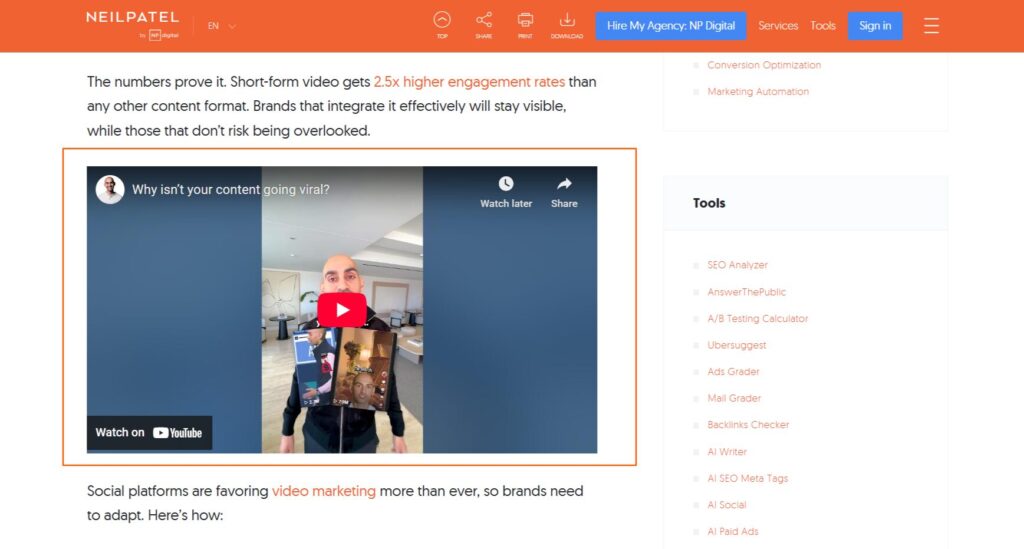
People are more likely to interact with videos than with text. Honestly, it’s not hard to see why. The virtual, graphics, and sound capture interest faster than a long block of words. Even more, studies have shown videos have a higher retention rate than text. In simple terms, that means people remember messages from videos more.
Boosts SEO Rankings
Videos make Google see your content as valuable, which helps in ranking. Because people love videos more, they are likely to spend more time on your blog, increasing dwell time. In addition to proper keyword placement, have videos.
Videos Improve Readership
Videos also help with reading the textual content. Online users have a short attention span and may drift off after reading long sections of text. The blogger can strategically place the video to break the long text.
Higher Conversion Rates

For a business, videos result in higher conversion rates, changing leads to customers. The conversation rate reaches 80%, which is high enough for a business owner to consider using and repurposing video content. Businesses that ignore video content miss out on huge engagement opportunities.
Choosing the Right Type of Videos for Your Blog
Having examined some of the benefits, you must be eager to get into the practical. What you must first know before integrating videos into your blog is the right video format. Not all videos would fit your blog.
Here are the common video formats to choose from:
Video Interviews & Q&A
Interviews can be done with an expert who brings deeper insight into a particular field. Q&A is an effective way to interact with visitors, where they can ask questions and you provide answers.
Explainer Videos
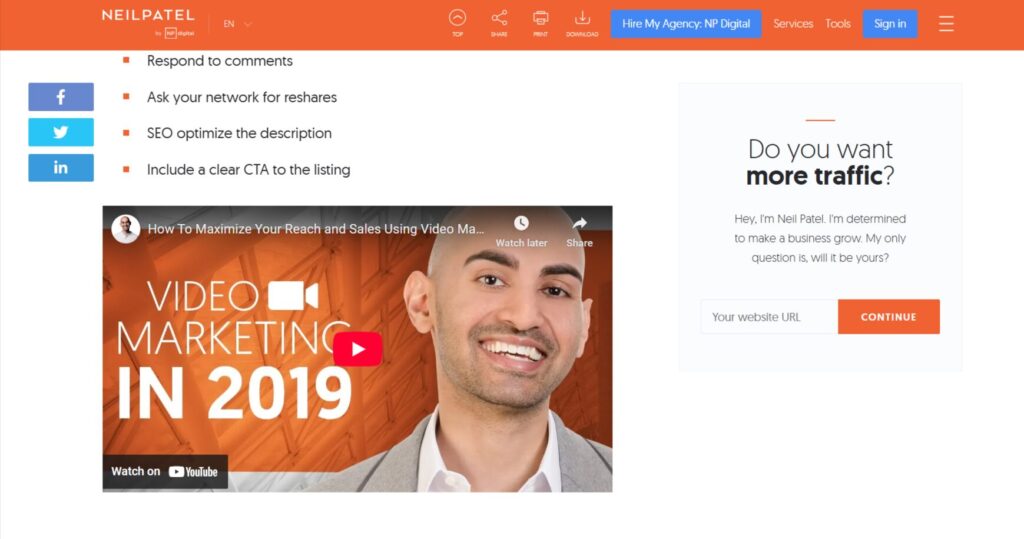
Explainer videos fit educational blogs and content types. They serve to make viewers understand concepts, ideas, and processes. They make complex topics simpler and can contribute to the use of a product.
Behind-the-Scenes Videos
Travel bloggers and several entertainment platforms use this video format more. They provide the audience with behind-the-scene videos with unedited moments. These videos can be bloopers, interactions with the crew and cast, or videos that show the process.
Product Reviews & Demonstrations
If you’re selling or recommending a product, include a video that portrays both how-to and reviews of the product. People trust what they see, so a video increases the potential for sales. Fashion and beauty stores recommend products a lot, so this video format fits well.
Storytelling & Vlogs
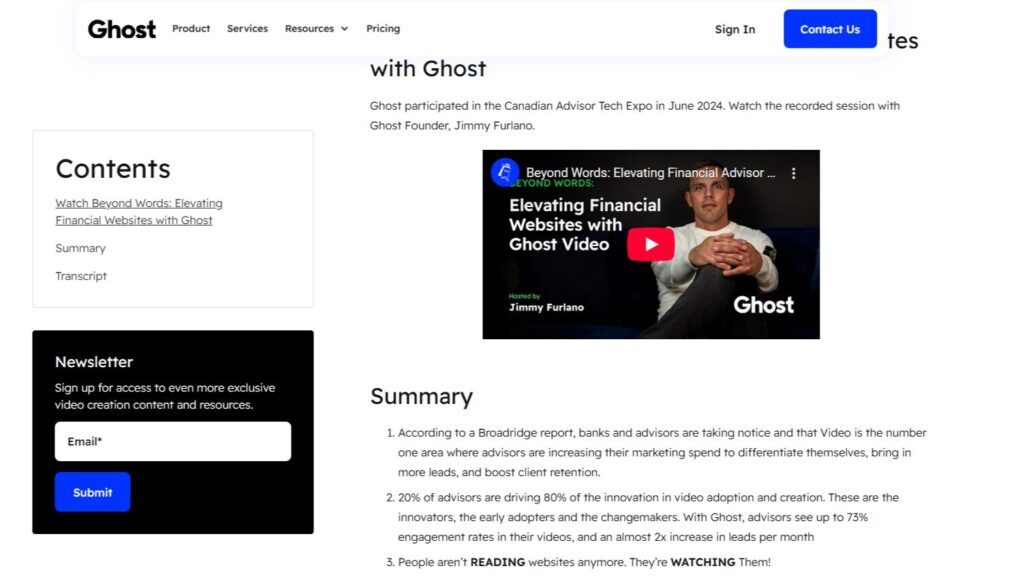
Storytelling is a good medium to connect with the audience, especially their emotions. According to the Harvard Business Review, engaging customer’s emotions is always a good step due to the turn-off. Storytelling also makes the business more personal, which increases trust and authenticity.
How to Create Engaging Blog Videos
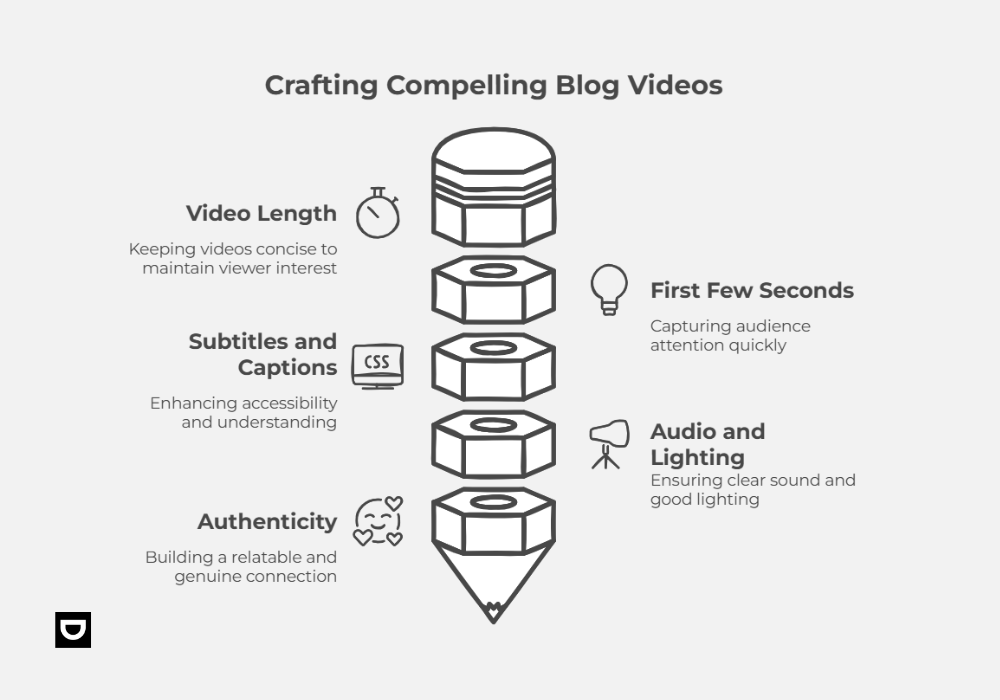
By now, you should have an idea of the video format that fits your blog. Let’s consider how to create them:
1. Do Not Make It too Long
People are always in a hurry on the internet, so their attention span will be short. Ideally, your videos should fall between 2 to 5 minutes. Anything longer, and you risk losing your audience. A tutorial can be longer, of course, but keep it around 10-15 minutes.
2. Maximize the First 5 Seconds
This goes back to attention span. Approach your video with the mindset that the first seconds are your best bets for capturing an audience. There are different ways to start your opening. It can be with a question, a bold statement, or a teaser as to what’s next.
3. Use Subtitles & Captions
Subtitles and captions are important, especially because of typical viewing habits. Many people watch videos on mute and may struggle with understanding without subtitles. Always think like your viewers and ensure their comfort.
4. Pay attention to Audio and Lighting
Viewers get frustrated when the audio is distorted, and the lighting is poor. Always prioritize clear sounds, good lighting, and stable shots. Invest in equipment that provides these three qualities.
5. Be Authentic & Personable
You’re connecting with your audience, not giving an impersonal speech. Everything must be geared towards connection. Have a smile, be relatable, and use understandable words while still reflecting your brand image.
Embedding Videos in Your Blog: Best Practices
After creating your videos and making sure they are of good quality, the next task is to integrate them in a way that will attract viewers. Here are some tips for integration:
Use an Eye-Catching Thumbnail
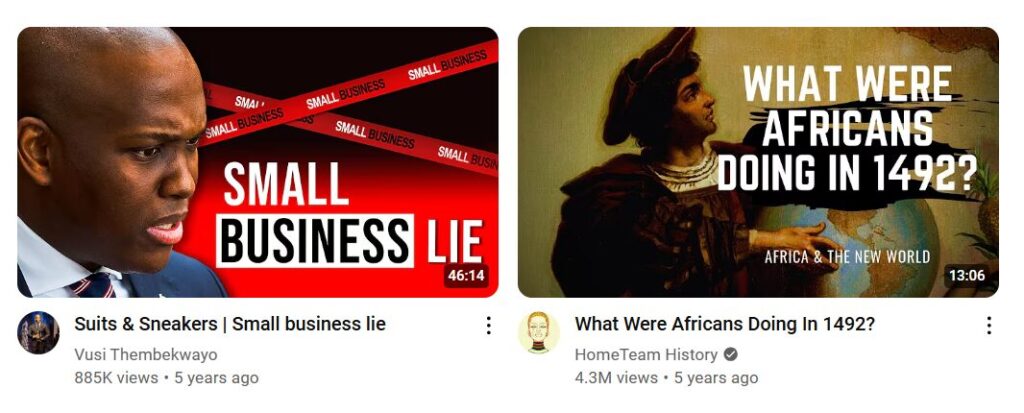
Video thumbnails give a first impression to viewers, either positive or negative. To get more clicks, the thumbnail and be relevant, clear, and personal, having a human expression for easy connection.
Place Videos Strategically
In addition to thumbnails, placing matters too. It should be at a strategic position where people can see, like close to the introduction. You can also place it before a key point or close to the end.
Optimize for Speed
Videos consume data and can make your blog slower, so you should optimize for speed. A common strategy is to go through a video platform like Vimeo and YouTube to host your videos. You can also enable lazy loading or use a lightweight video player.
Add a Video Transcript
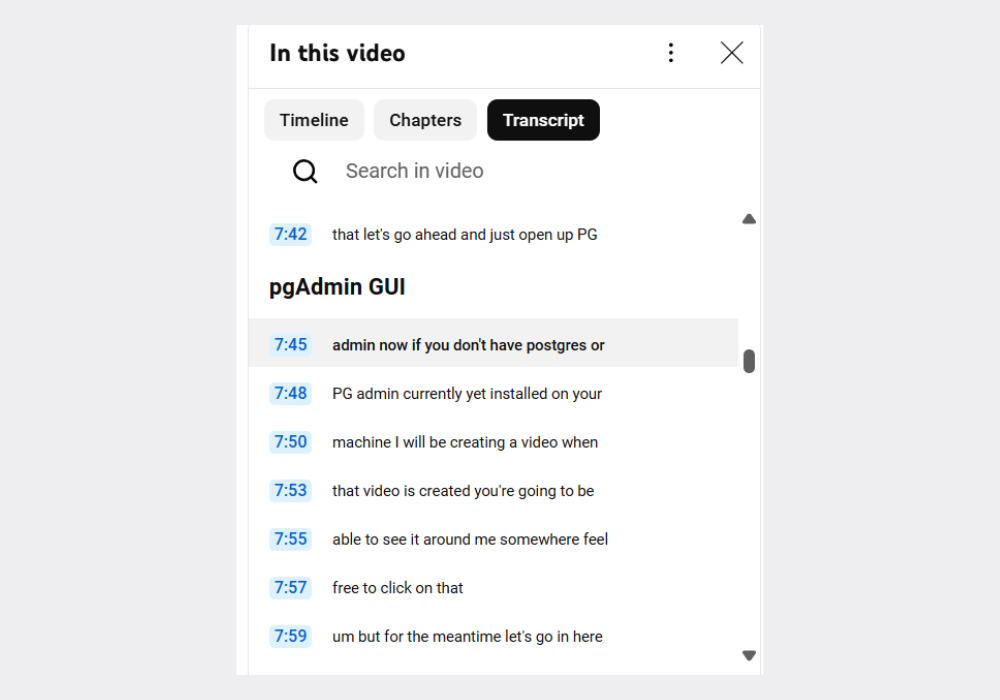
Have your video accompanied by a transcript to make it more accessible. Transcripts are also SEO-friendly, which helps with ranking.
Driving More Engagement with Video Content
If you simply add the video and leave it at that, it won’t achieve the aim of engaging viewers. You must be proactive in encouraging viewer interaction.
Ask Viewers to Comment & Share

This can be done in two ways. You can either directly ask for comments and shares (“Like our video and drop a comment!) or drop a prompting question (“Have you ever encountered such a situation? Let us know in the comment section!”)
Repurpose Your Video Content
Repurposing means you can use one video to make multiple content. For example:
- A YouTube video can be repurposed as a blog post. For a quick guide on how to repurposed your Youtube videos into blog posts.
- A Blog post can become an Instagram Reel or TikTok snippet.
- A podcast episode can turn into video clips for Twitter.
Use Video in Your Email Newsletter
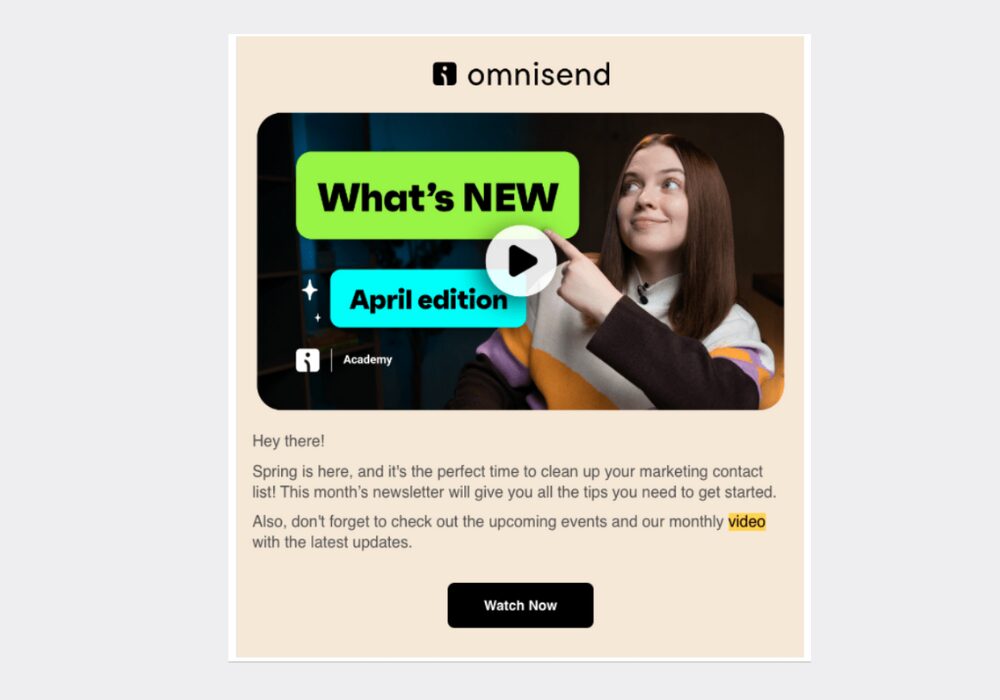
When sending Email Newsletters, add “video” to the email subject line to increase chances of opening them. A GIF preview and clickable link can help, too. Videos also make email newsletters stand out and appear more interesting to viewers.
Run Contests & Giveaways
Contests and Giveaways are simple yet effective tactics to build and increase engagement. We all enjoy gifts, a chance to compete, and prizes. Thus, contests and giveaways benefit both you and the lucky viewers. For example, you could say, “Comment on this video to win a free ebook!”
Monetizing Your Blog Videos
Not everyone wants to monetize their videos, but if you choose to do so, here are some ways to turn them into income.
- On YouTube, you can enable monetization to earn income from ad revenue.
- You can engage in affiliate marketing, recommending products to gain commission.
- Some brands pay for sponsored content, especially if you have a significant audience.
- If your blog is an expert in a niche, you can create paid courses for learners of different categories.
Final Thoughts
Blogging with videos is the future and remains so. By integrating engaging videos into your blog, you’ll boost engagement, rank higher on Google, and build a stronger connection with your audience.
To get the most out of blogging videos, take small steps, remain consistent, and always be ready to improve.




